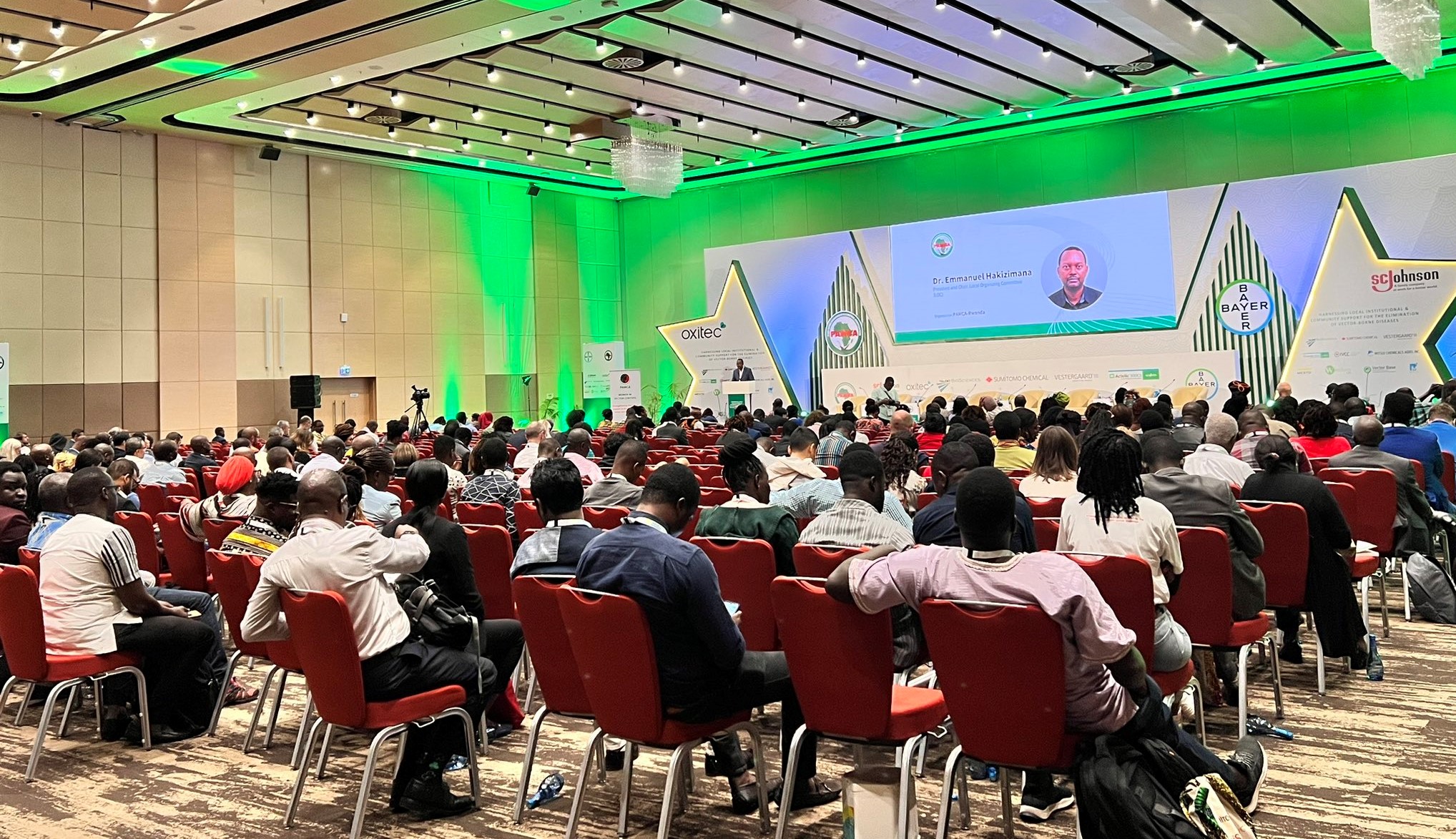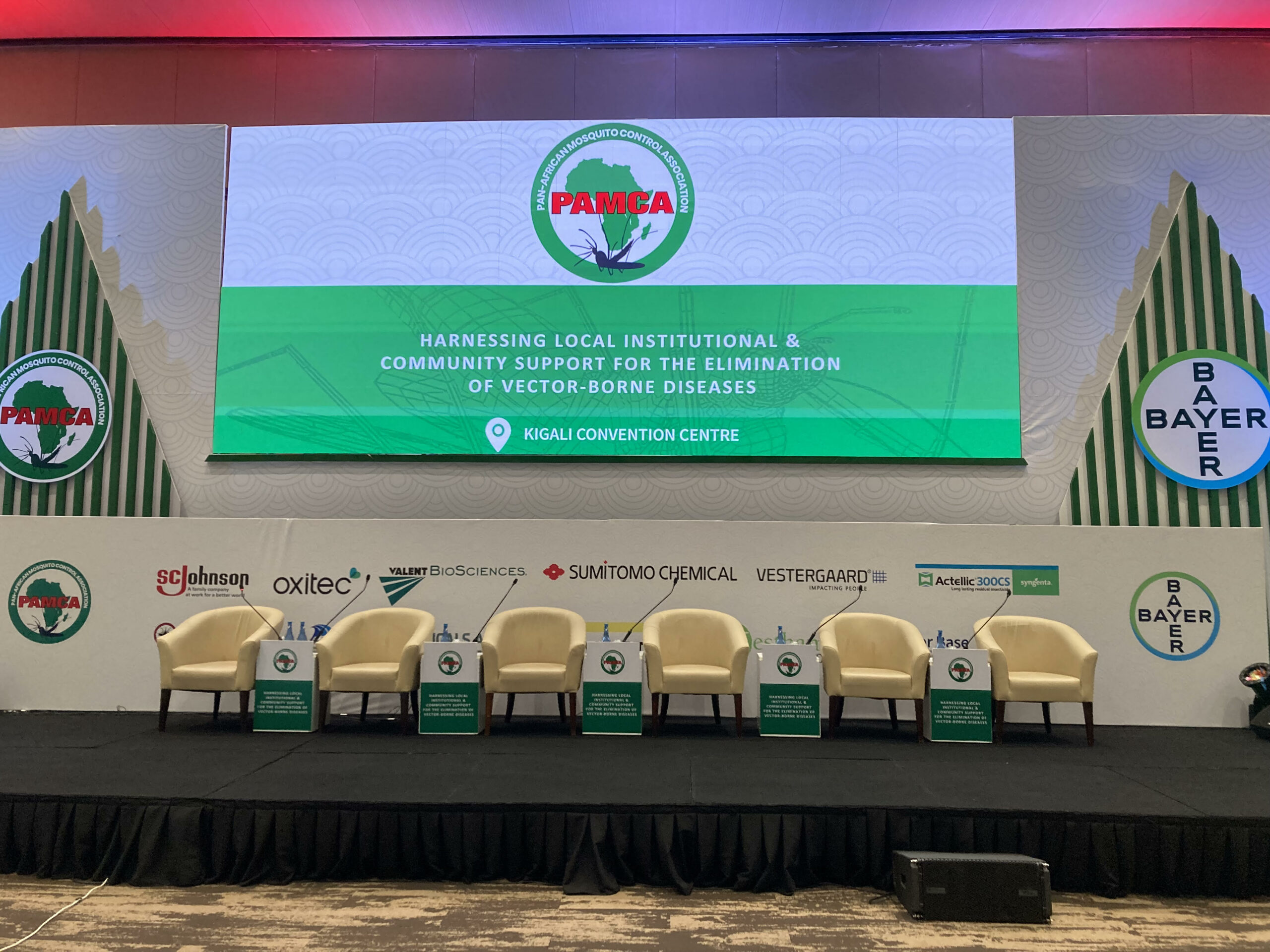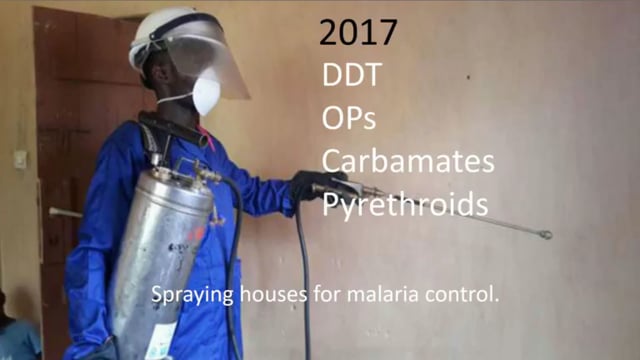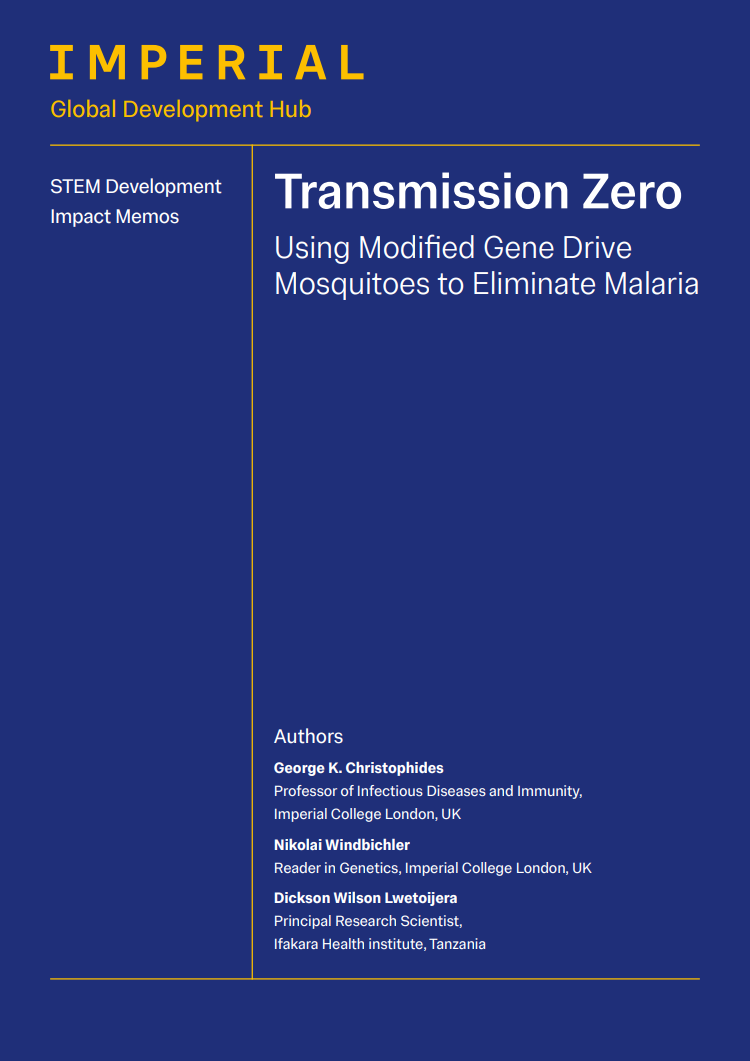8th PAMCA Annual Conference and Exhibition: Day 3
Wednesday, 28th September 2022
Published: 04/10/2022
This report is brought to you by the MESA Correspondents Lambert Nzungize, Eggrey Aisha Kambewa, Oyinkansola Suliat Fadiji, Jean Claude Ngirimana, Diane Leslie Nkahe, Mauro Pazmino Betancourth, Patricia Doumbe Belisse, Nathalie Amvongo Adjia, Otubea Owusu Akrofi, and Caroline Kiuru. Senior editorial support has been facilitated by Jessy Goupeyou-Youmsi and Idelphonse Bonaventure Ahogni.
THEMES: THEMES: Vector Control
MESA Correspondents bring you cutting-edge coverage from the 8th PAMCA Annual Conference and Exhibition “Harnessing local institutional and community support for the elimination of vector-borne diseases (VBDs)”.
Day 3: Wednesday, 28th September 2022
Plenary talks 5 to 7:
Jaishree Raman (Laboratory for Antimalarial Resistance Monitoring and Malaria Operational Research – ARMMOR, South Africa) pointed out that existing interventions are not sufficient, therefore investing in genomic surveillance could help get closer to malaria elimination. As it allows early detection of resistance (diagnostic, antimalarial, insecticide) and resistance gene flow. This technique has been proven in other infectious diseases with the determination of transmission networks, foci and parasite flow. However, the fear of victimization over novel findings and data ownership are some concerns limiting the prompt sharing of outcomes. Therefore, National Malaria Control Programmes (NMCPs) and policy-makers should get more involved to achieve sustainable genomic surveillance.
Fitsum Girma (Armauer Hansen Research Institute – AHRI, Ethiopia) introduced the threats related to the invasion of An. stephensi in Ethiopia. He presented the distribution of this species in the horn of Africa. Many facts about An. stephensi were highlighted, namely its ability to transmit P. falciparum and P. vivax, preference for man-made water storage containers, and behavioral plasticity. He showed the role of An. stephensi in the transmission of malaria. Bioecology studies of this vector in the city of Dire Dawa, Ethiopia, reveal its predominance across the study site with most of them resting in animal shelters although they could rest both indoors and outdoors. In general, malaria incidence in this city is alarmingly increasing and linked to An. stephensi.
Abdoulaye Diabate (Research Institute of Health Sciences – IRSS, Burkina Faso) at the onset of his talk presented the rich research pipeline of vector control. Despite the recent success of vector control efforts and the great support provided by funders such as the Innovative Vector Control Consortium (IVCC), malaria is still a great concern. Several teams have come together through the Scientists Against Malaria (SAM) Consortium to address the knowledge gap concerning ecological and physiological parameters related to mating behavior, hence helping to control population growth. Diabate and collaborators developed a growth regulator to control mosquitoes. It is an ongoing study which needs more effort to be deployed and currently, genetic engineering is used to improve its efficacy.
Parallel Scientific Session 9: Vector surveillance, epidemiology, disease control programs and global health
Roger Damon and Doreen Siria (Ifakara Health Institute – IHI, Tanzania) believe understanding the age structure of mosquitoes, especially “Anopheles gambiae”, is important because it can be used to assess the risk of infection vis-a-vis and the impact of interventions. Current tools to measure age structure are limited, the reason why Roger, Doreen and collaborators. carried out this study. The use of mini infrared spectroscopy (MIRS) was proposed based on factors like; robustness and greater accuracy. To enhance the quality of the results, there was a need to combine MIS with a convolutional neural network (CNN). They ended the talk by pointing out the need to develop more effective spectrometers and accelerate the uptake by end-users.

Malaria in Mozambique is endemic throughout the year although it peaks during the rainy season. Therefore, Dulcisária Marrenjo (National Malaria Control Program, Mozambique) and colleagues decided to study the vector feeding behaviour using human baits in order to identify interventions that can be adopted “where or for what?”. Results showed An. funestus and An. gambiae to be the predominant species, biting occurred both indoors and outdoors with An. funestus feeding more indoors and An. gambiae more outdoors. The outdoors biting behaviour could jeopardise the impact of insecticide residual spraying (IRS) and insecticide-treated nets (ITNs) since the majority of the current interventions are designed to attack mosquitoes in an indoor setting.
Mercy Opiyo (The University of California, USA) highlighted the lack of operational guidance to perform certain interventions in Mozambique, reason why she involved herself with the Entomology Adaptive Sampling Framework (EASF) project which has two sides, Mozambique and Ghana. The EASF plan to provide information on the cost of interventions, the user experience and future surveillance frameworks. Opiyo pointed out the need to take vector control decisions based on entomological data. In Mozambique, the project is more advanced and data has been already collected from four villages already after a process of downsampling. Opinions from the community were gathered through questionnaires. In Ghana, data collection hasn’t started yet. The pilot EASF in Mozambique helped National Malaria Control Programmes (NMCPs) to improve the monitoring and evaluation of issues related to surveillance and also improve the model for Ghana.
Adeogun Adedayo (Nigeria Institute for Medical Research – NIMR, Nigeria) presented the progress of malaria vector surveillance in relation to the fight against insecticide resistance in Nigeria, a country that in 2012 encountered approximately 26% of the total malaria cases. These numbers made the President Malaria Initiative (PMI) to invest heavily in the country by 2012. A few years later, the Global Fund invested too making the vector control program in the country to be extended to 29 out of 36 states in total. Surveillance and entomological data were available for the 29 states. Modelling studies are evaluating how to cover the rest of the states. The current challenge is that despite the huge amount of information collected on epidemiological aspects of the vector in the country, there is still a lack of data on the route of transmission.
Parallel Scientific Session 10: Vector biology, ecology, taxonomy and population genetics
Victor Balyesima (Uganda Virus Research Institute – UVRI and Target Malaria, Uganda) highlighted the fact that Arthropod Containment Level 2 (ACL2) facilities are needed for the support of genetically modified mosquito containment studies. To test ACL2’s facilities team’s ability to handle transgenic mosquitoes, wild types pigmented and non-pigmented An. gambiae population were selected and maintained in a heterozygous state by backcrossing generations. The team also measured some life traits. The study showed no significant difference in hatching rates, average larval development time and sex ratio, between the pigmented and non-pigmented at each backcross. Successful maintenance of the two phenotypes under ACL2 standards was obtained with no significant differences in the developmental parameters.
Gift Mwanga (Macha Research Trust, Zambia) began his presentation by recalling the primary tools used in vector control. His research aims to assess species diversity in Zambia through an entomological cross-sectional survey. As a result, 13 mosquito species were identified. Morphological studies showed that An. gambiae sensus lato (s.l) was abundant. Molecular studies showed that An. gambiae sensus stricto (s.s) was abundant, and for parasite infection, Plasmodium falciparum was highly presented in An. gambiae s.l. Gift concluded that more efforts in vector control are required.
Rosine Z. Wolie (University of Félix Houphouët-Boigny – UFHB, Ivory Coast) presented eave tubes as an innovative delivery system with a high dose of insecticide capable of killing insecticide-resistant mosquitoes. The evaluation of the efficacy of eaves at the community level involved 40 villages (20 control and 20 intervention) in Ivory Coast, from May 2017 to April 2019. Mosquitoes were collected, identified, screened for Plasmodium spp. infection and compared between control and treated sites. Anopheles gambiae s.I. had the highest infective bites compared to An. funestus in the control group. Parity and entomological inoculation rates by the intervention were higher in the control as well. The use of eave tubes decreased vector density and malaria transmission indicators.
Parallel Scientific Session 11: Precision public health and innovations for VBD elimination: AI, entomological databases, modelling and genomic surveillance
Tristan Ford (Vectech, USA) started his talk by showing a device capable of taking mosquito pictures and morphologically identifying species with an accuracy of over 90%. The device aimed at reducing the time for morphological identification, as well as helping with the digitalization of the information using deep learning models. The device has been tested with species from the USA such as Aedes aegypti and An. albopictus or Culex pipiens, but also with An. gambiae and An. funestus. Its current database consists of 39 mosquito species and it requires around 100 photographs of a new species to be able to morphologically identify the species with high accuracy. Current work is focused on making the device compact and sturdy for fieldwork.
Lakamy Sylla (Malaria Research and Training Center, University of Sciences, Techniques and Technologies of Bamako – USTTB, Mali) showed the work of the Target Malaria project on capacity building in the development of genetically modified mosquitoes in Mali. Target Malaria is a non-profit organization that focuses on the development of cost-effective technologies, in this case, transgenic mosquitoes and capacity building to reduce mosquito populations. The process started with the creation of male sterile mosquitoes. Then, as the technologic evolved, it continued with the transfer of the transgene into local mosquitoes and the evaluation of the strains in terms of longevity, mating competitiveness and sexual sterility. This also included the construction of a contained laboratory for testing. Lakamy concluded his talk by showing the importance of building local facilities for the development of this technology and the need of training local scientists and technicians.
Parallel Scientific Session 12: LLINs, IRS and Insecticide Resistance management
Jackline Martin (Kilimanjaro Christian Medical University College – KCMUCo, Tanzania) presented the bio-efficacy of three different classes of bed nets; Olyset plus, Interceptor G2 and Royal Guard. High sterility of An. gambiae was observed after exposure to Royal Guard, however, sterility decreased over time. Olyset plus nets and Interceptor G2 nets failed to meet WHO criteria of 80% mortality after 24 hours at 12 and 24 months. However, interceptor G2 performed better than standard interceptor nets. Olyset plus nets were discarded faster than the other nets with it having the poorest textile durability.
Eliud Lukole (National Institute for Medical Research – NIMR, Tanzania) compared the survival, physical durability and efficacy of permethrin Long-lasting insecticidal nets (LLINs), Olyset®, and permethrin plus piperonyl butoxide (PBO) LLIN, Olyset®Plus, in Northwest Tanzania. The study reported that for both LLINs, almost 50% of the nets were lost by 24 months post distribution and over 70% after 36 months post distribution. The study observed that fewer nets were lost in arms that received indoor residual spraying. Further, the study reported that aged pyrethroid-PBO LLINs offered better protection compared to pyrethroid-only LLINs (standard LLINs) in their second year of use. Lukole concluded by recommending adjustment of the 3-year LLINs replacement strategies to a shorter time or the manufacturing of LLINs with up to 3 years of durability.
Leon Mugenzi (Centre for Research in Infectious Diseases – CRID, Cameroon) pointed out that to manage insecticide resistance, it is important to understand the resistance mechanisms, the origin of the resistance and how spreads within the mosquito populations. The study investigated the contribution of a 4.3kb structural variant (SV) inserted in the promoter region of CYP6P9b to resistance phenotypes. The study found the SV to be occurring in near fixation frequencies in Cameroon and Uganda. The frequency increased over the years and was associated with the deltamethrin resistance phenotype. Further, the SV was found to be associated with increased expression of CYP6P9a/b. The study findings highlighted the role of SVs in the evolution of insecticide resistance and proposed the use of SVs as an additional tool for molecular surveillance of insecticide resistance.
Josue Zanga (University of Kinshasa, Democratic Republic of the Congo) presented on finding pragmatic ways in conducting a comparative performance study of nets. The effectiveness of pyrethroid-treated bed nets has been limited due to pyrethroid resistance. Synergist PBO is able to reverse resistance and thereby improve the effectiveness of the pyrethroid. A cluster randomized control trial linked to the 2020 distribution of standard bed nets and PBO co-treated nets in DRC was performed. Comparative performance of the two nets was conducted by comparing malaria prevalence in pregnant women. Over 18 months, malaria prevalence was reduced in the PBO co-treated study arm compared to pyrethroid-only nets. This study has highlighted an inexpensive way of conducting a comparative performance study of bed nets.
Emmanuel Menze (Liverpool School of Tropical Medicine – LSTM, UK) presented on the need to assess the impact of metabolic resistance on the effectiveness of pyrethroid-only bed nets compared to a PBO-based pyrethroid net experiments were conducted to assess the exophilic, mortality and blood feeding of insecticide-resistant mosquitoes when exposed to the two types of nets. The presence of resistance alleles in mosquitoes increased their ability to blood feed and survive. Resistant mosquitoes survived and blood fed more when exposed to pyrethroid-only Olyset nets compared to PBO-based Olyset nets. This study showed the importance of using PBO-based Olyset plus nets in areas of pyrethroid resistance.
Parallel symposium 5: Strengthening the nexus between parasite and vector genomics to accelerate malaria elimination in Africa
Paballo Chauke (Sanger, UK) began his presentation by discussing the success of the genomic data analysis training course, where trainees learned how to identify insecticide resistance. He also mentioned the first cohort of the training program in partnership with PAMCA and MalariaGenin 2022, delivered virtually, with about 50 participants from all over Africa. In addition, Chauke stated that two candidates were chosen for the PAMCA bioinformatics fellowship program in 2022.
Alistair Miles (Wellcome Sanger Institute, UK) started his presentation by asking what role PAMCA and MalariaGen should play in the future. As a short answer, the only way both should work is together as a community to accelerate malaria genomics surveillance in Africa.
Lucas Amenga (University of Ghana, Ghana) initiated his talk by reminding us that malaria transmission remains heterogeneous but relatively high in Ghana. His study had two main objectives: assessment of the abundance of malaria vectors and assessment of the level of insecticide resistance in Ghana. For sample collection, CDC light traps and human landing catches were used. As a result, An. gambiae was abundant and copy number variation (CNV) revealed that the CYP9K1 gene conferred insecticide resistance in Ghana. The kdr west was discovered to be fixed throughout the country. The CYP6aap/1 cluster in An. culuzzi confers resistance in the north of Ghana. As a result of comparing sample sizes, no structure was identified in the north, whereas structure between samples was identified in the south.
Deus Ishengoma (National Institute for Medical Research, Tanzania) reported the outcomes from a malaria molecular surveillance (MMS) project in Tanzania. He explained the objectives of the project, such as identifying the parasite population, drug resistance, training the students, and developing testing models using data. The samples were collected from the community in partnership with health centers across the country, and all samples were RDT-positive. Therefore, qPCR was used on random samples to confirm Plasmodium spp.. Results identified artemisinin resistance in one district only, which is closer to Rwanda. Thus, suggesting that the migration of artemisinin resistance may have originated in Rwanda. The hrp2/3 gene deletion has been tested and found to be spread across Tanzania. Deus concluded that in the future, the deep sampling should be based on the school and initiate genomics sites in the East Africa region.
Parallel symposium 6: Presenting the ATSB® (Attractive Targeted Sugar Bait); a novel outdoor intervention
Woody Foster (The Ohio State University, USA) started the presentation by highlighting that while males need only sugar to survive, females need both sugar and blood meal to produce eggs. Mosquitoes are attracted by some volatile chemical detected by their antenna. A Baited Trap test in screen houses was performed to know which chemicals make the odour attractive to them and the factors that help females to choose between a blood meal or sugar taken. The choices were influenced by phenylacetalldehyde, 1-hexanol and linalool, depending on internal and external stimuli. Female and male were human and sugar feeder dependent respectively. Since female insemination depends on male feeding and survival, feeding knowledge could help population surveillance.
Michal Elias Gez (Westham CO., Israel) mentioned that attractive target sugar baits (ATSBs) are a newly developed product, based on the “Attract and Kill” approach, to control outdoor malaria transmission in peri-domestic areas. A successful large-scale field trial took place in Mali (2016-2017), showing a significant impact on mosquito density and survival. Bait formulation and bait station are the two components of ATSB. It targets outdoor vectors and is oral delivering, which allows it to bypass resistance mechanisms. The product is safe for humans and the environment. In addition to Mali, epidemiological trials are in progress in Zambia and Kenya are on track.
Nick Yalla (KEMRI, Kenya) evaluated the attractiveness of An. gambiae and An. arabiensis to the ATSBs compared to natural sugar sources. He conducted semi-field experiments using the glue-netted trapping method. Several plants were used such as Mangifera indica and Crotalaria pallida. Yalla’s results highlighted that ATSBs are highly attractive compared to the most attractive plants suggesting that Anopheles mosquitoes are attracted to feed on ATSBs despite the availability of natural sugar sources. ATSBs in bait stations placed outdoors are ideal for the control of outdoor biting mosquitoes and may inadvertently attract and kill indoor-bound mosquitoes.
Mohamad Traore (Bamako University, Mali) focuses his speech on the paradigm of attractive toxic sugar bait from concept to clinical trials. It is a bi-dimensional bait station which can be simply hung on walls and can be protected from the adverse environment. Randomized entomological trials were conducted in 14 southern villages of Mali. Results showed that the daily feeding rate exceeds the 2.5% threshold which corresponds to a 30% reduction in malaria incidence.
Eric Ochomo (KEMRI, Kenya) shared the results of an epidemiological evaluation of ATSBs in Kenya, Mali and Zambia. Prior to the results, he presented ATSBs as a tool to address outdoor transmission. Ochomo went through different steps required to set ATSBs as a WHO-qualified product. He compared the efficacy of ATSBs combined with LLINs to LLINs alone in reducing the case burden of clinical malaria. This efficacy could be assessed through epidemiology, entomology, social science and cost-effectiveness studies. ATSBs epidemiology and entomological trials were launched in three countries: Zambia, Kenya and Mali. The study is still ongoing and aims to assess community insights about ATSBs.
Javan Chanda (PATH, Zambia) focused his speech on the acceptance of ATSBs by the population in Zambia. Work was conducted by a team of community engagement. Teams were well-trained in their role of supporting community engagement and door-to-door sensitization to orient households in their communities. Following his talk, communities are presenting concerns about ATSBs used in populations like suspicion and mistrust, side-effects. To address these concerns, community health workers (CHWs) conducted door-to-door follow-up and community meetings for information. Chanda concluded that community engagement is a critical component of the ATSB intervention. Close monitoring, continuous communication with communities and rapid response to community concerns are needed to ensure high coverage. ATSB refusals and removals occurred throughout the study area directly following installation.
Parallel Symposium 7: Regulating the use of genetically modified mosquitoes for malaria control in Africa
Charles Mbogo (KEMRI-Wellcome Trust, Kenya) presented novel tools under development for controlling malaria vectors. These are; 1) Attractive toxic sugar baits (ATSBs) which are adulticides and target mosquitoes’ need to feed on energy. Field studies are occurring in Mali, Kenya and Zambia. 2) Widespread use of ivermectin in humans and cattle as a control tool against residual transmission. Large-scale ivermectin field trails are occurring in Burkina Faso and Ivory Cost. 3) Gene drive technologies to render vector populations incompetent to transmit diseases or to reduce the prevalence of the vector. Ongoing field studies are occurring in Burkina Faso, Ghana, Mali and Uganda.
Dorington Ogoyi (University of Kenya, Kenya) presented on steps Kenya took in regulating research on genetically modified mosquitoes (GMMs). Regulatory boards are there to provide pathways for GMMs and to make sure adverse effects of genetically modified organisms (GMOs) are addressed so human health and the environment are protected when conducting experiments. GMMs are expected to be regulated throughout biosafety and environmental pathways. Biosafety and ethical committees are heavily involved in all stages of research and act as oversight on GMMs research and development.
There is the question of what to regulate also, product or process? Hennie Groenewald (Biosafety, South Africa) puts forward a strong case as to why regulating the process can delay the product hence, it is the product that should be regulated. However, regulation is necessary in order to take genetic modification to the field once everything is correct as everything that was done wrong in crop biotechnology can be averted. Biosafety of the environment is important when talking about gene drive because of its impact and this is where responsible governance comes into play. Regulation is important because of the new risk category genetically modified mosquitoes fall within.
Agha Ukpai Agha on behalf of Rufus Ebegba (Nigeria Biosafety Management Agency – NBMA, Nigeria) started the presentation by pointing out that the NBMA was established in 2015 to reflect modern biotechnology, and ensure its safety for human health, biodiversity and the environment. This mandate was expanded in 2019 to include the regulation of gene editing, gene drive, biosafety and some others. There is a committee that looks into applications, which must be made before products are accepted in the country. There are also well-trained technical staff who have been supported by the agency in the area of capacity development abroad. Presently, genetically modified mosquito guidelines are being developed.
Closing Remarks
To begin the closing remarks, Dr. Emmanuel Hakizimana (President, PAMCA – Rwanda) expressed his gratitude to all; attendees, presenters, organisers, partners, donors, sponsors and funders as well as the government and people of Rwanda. He encouraged everyone to continue to work on addressing vector-borne diseases (VBDs) and not lose the network built in the course of the conference. He encouraged everyone working on VBDs to align research agendas based on our local challenges and optimise the use of available tools.

Dr. Prosper Chaki (Executive Director, PAMCA) gave a follow-up remark narrating the challenges brought by the COVID-19 pandemic resulting in the adoption of the virtual conference last year. He acknowledged receiving support from the Gates Foundation and Bayer. He is attuned to how despite the language barrier, the impact has been made gathering from remarks from attendees. He solicited for further donations to support most affected communities, women, early career researchers and students. Prosper also mentioned that over 600 participants registered for this year’s event and that Ethiopia will be hosting the 9th PAMCA Annual Conference & Exhibition in 2023. He threw open a challenge of 800 participants for next year.
To conclude the closing remarks, Prof. Charles Mbogo (President, PAMCA) was called upon who was elated about the turnout at this year’s event and specially thanked Dr. Damaris (Programme Manager for Capacity Building & Gender Mainstreaming at PAMCA) for bringing the women together. He further challenged the secretariat to begin a young investigator award.
This report is brought to you by the MESA Correspondents Nzungize Lambert, Eggrey Aisha Kambewa, Oyinkansola Fadiji and Jean Claude Ngirimana, with the support of the past correspondents Leslie Diane Nkahe, Mauro Pazmino Betancourth, Doumbe Belisse Patricia and Nathalie Amvongo-Adjia, and other volunteers Otubea Owusu Akrofi and Caroline Kiuru. Senior editorial support has been facilitated by Jessy Goupeyou-Youmsi and Idelphonse Bonaventure Ahogni.
Published: 04/10/2022
This report is brought to you by the MESA Correspondents Lambert Nzungize, Eggrey Aisha Kambewa, Oyinkansola Suliat Fadiji, Jean Claude Ngirimana, Diane Leslie Nkahe, Mauro Pazmino Betancourth, Patricia Doumbe Belisse, Nathalie Amvongo Adjia, Otubea Owusu Akrofi, and Caroline Kiuru. Senior editorial support has been facilitated by Jessy Goupeyou-Youmsi and Idelphonse Bonaventure Ahogni.
THEMES: Vector Control


